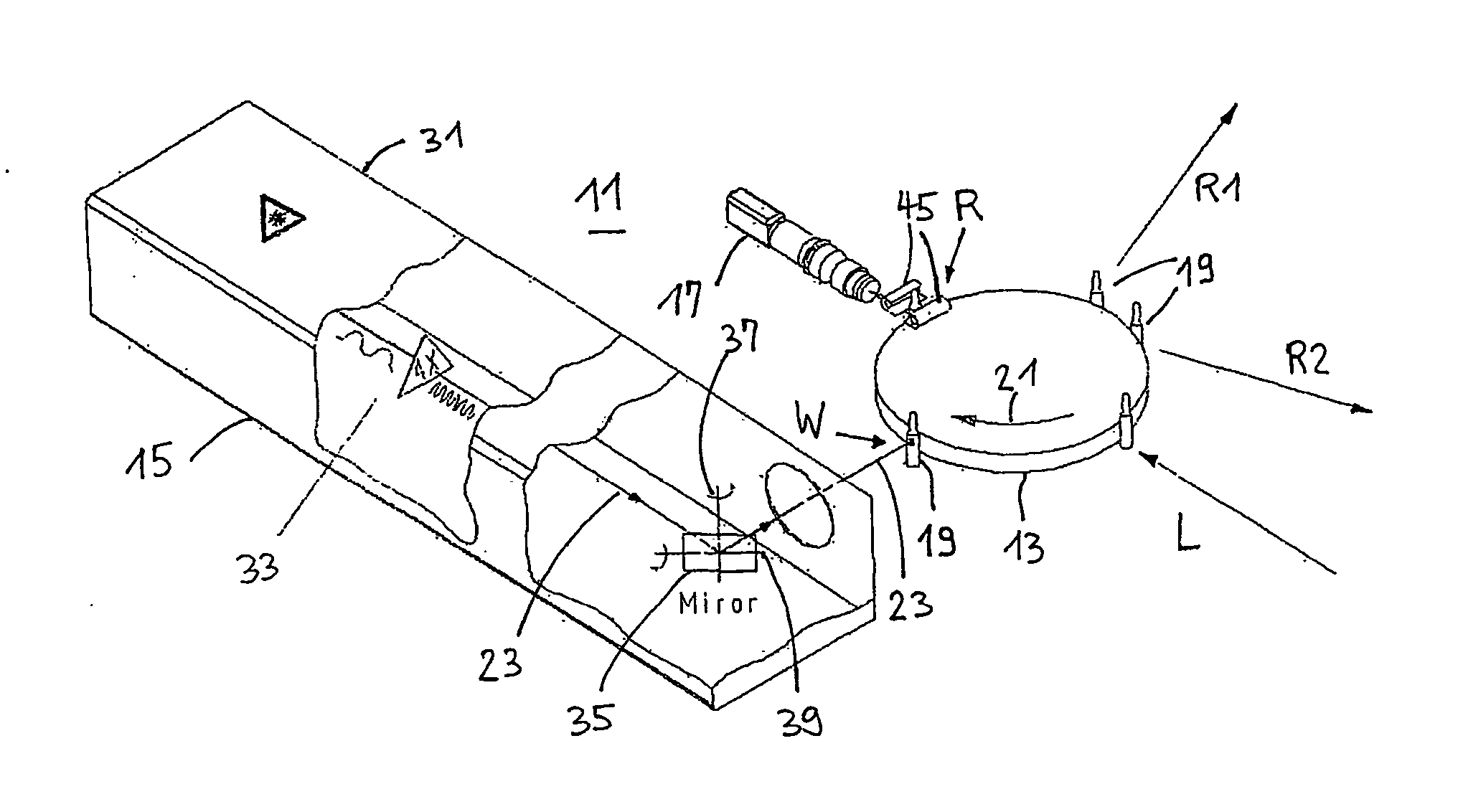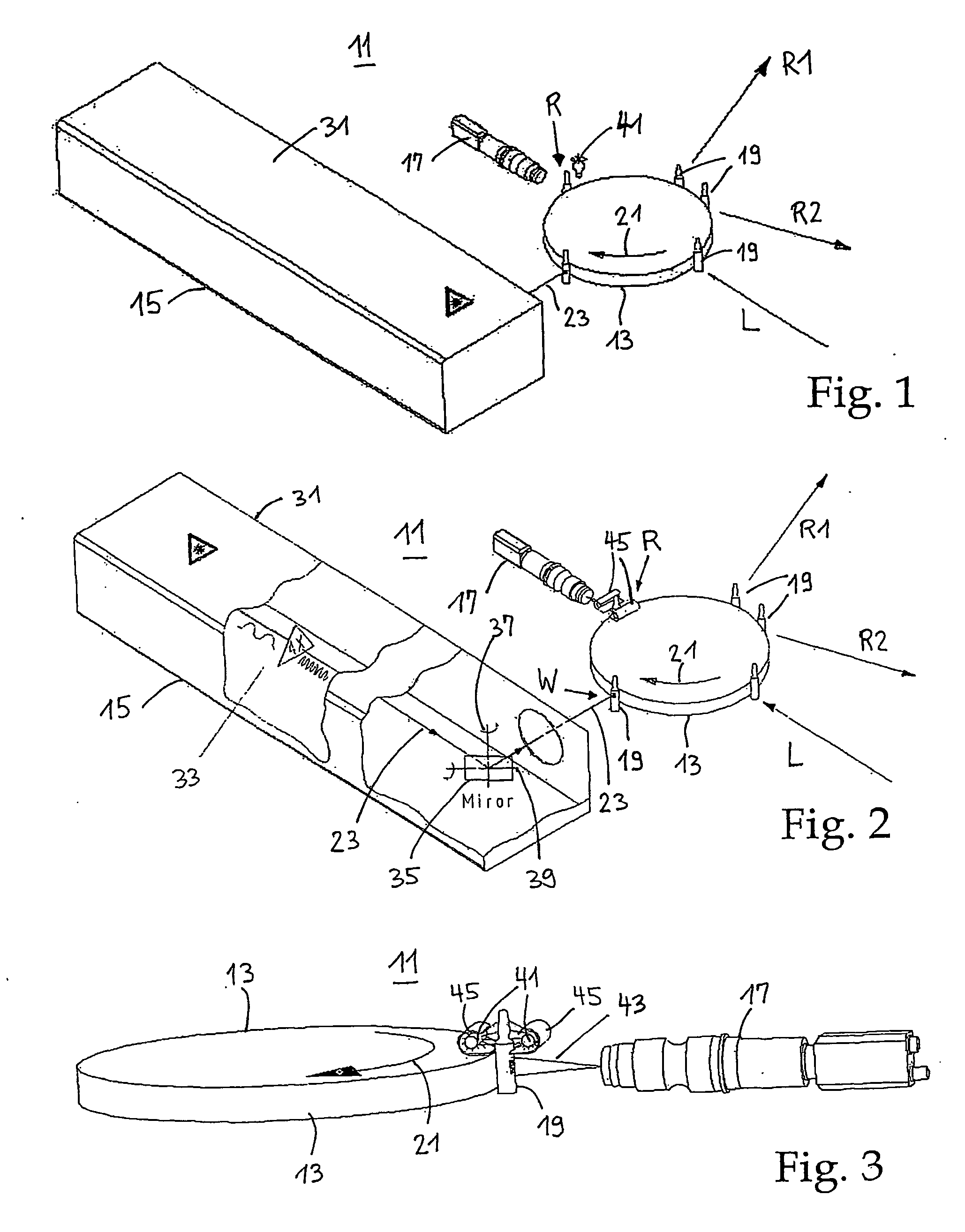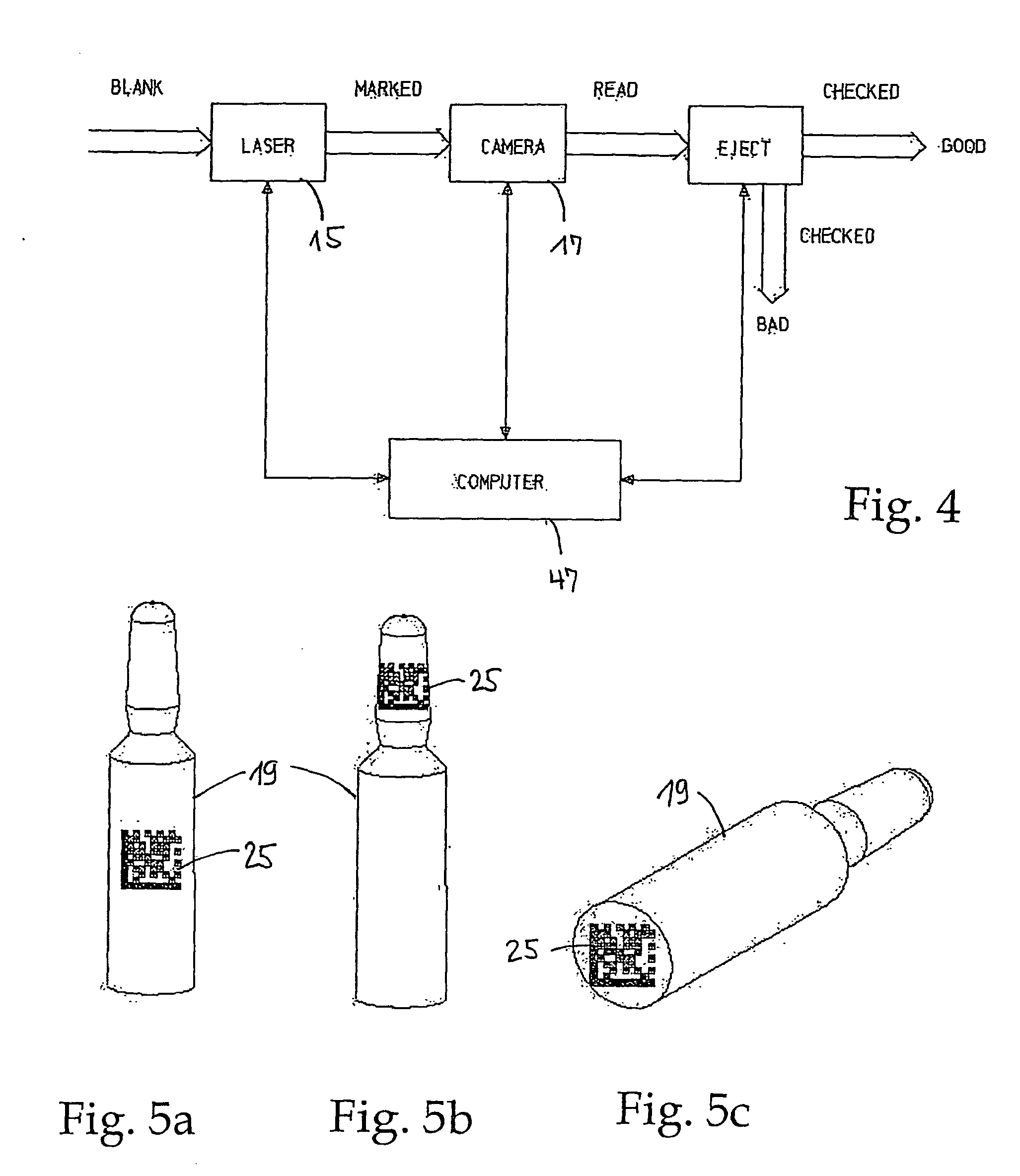Method and a device for depositing a wipe-proof and rub-proof marking onto transparent glass
a technology of transparent glass and markings, applied in the field of two-dimensional codes, can solve the problems of insufficient possibilities, no unique serial number of these technologies, and the lack of labeling, and achieve the effect of not damage to the glass
- Summary
- Abstract
- Description
- Claims
- Application Information
AI Technical Summary
Benefits of technology
Problems solved by technology
Method used
Image
Examples
Embodiment Construction
[0023] According to the invention this object is achieved by a method with the features of claim 1. By way of a transport means a large number of glass receptacles may be transported past a laser. By way of detecting the position of a glass receptacle and as the case may be the transport speed of the transport means the laser beam may be triggered at the right moment and a marking pattern stored in a memory medium engraved into the surface. The marking engraved into the surface may be scanned and detected directly after the writing procedure by way of a suitable read means and may be compared to the marking pattern stored in the memory medium. By way of a comparison of the predefined code pattern with the actually written code pattern one may ascertain immediately whether the inscription is OK. One may thus meet the demand of a hundred percent retracability of the samples. Thus a mixing up of medications may no longer occur on account of a marking engraved into the glass surface. Th...
PUM
| Property | Measurement | Unit |
|---|---|---|
| Radius | aaaaa | aaaaa |
| Radius | aaaaa | aaaaa |
| Radius | aaaaa | aaaaa |
Abstract
Description
Claims
Application Information
 Login to View More
Login to View More - R&D
- Intellectual Property
- Life Sciences
- Materials
- Tech Scout
- Unparalleled Data Quality
- Higher Quality Content
- 60% Fewer Hallucinations
Browse by: Latest US Patents, China's latest patents, Technical Efficacy Thesaurus, Application Domain, Technology Topic, Popular Technical Reports.
© 2025 PatSnap. All rights reserved.Legal|Privacy policy|Modern Slavery Act Transparency Statement|Sitemap|About US| Contact US: help@patsnap.com



